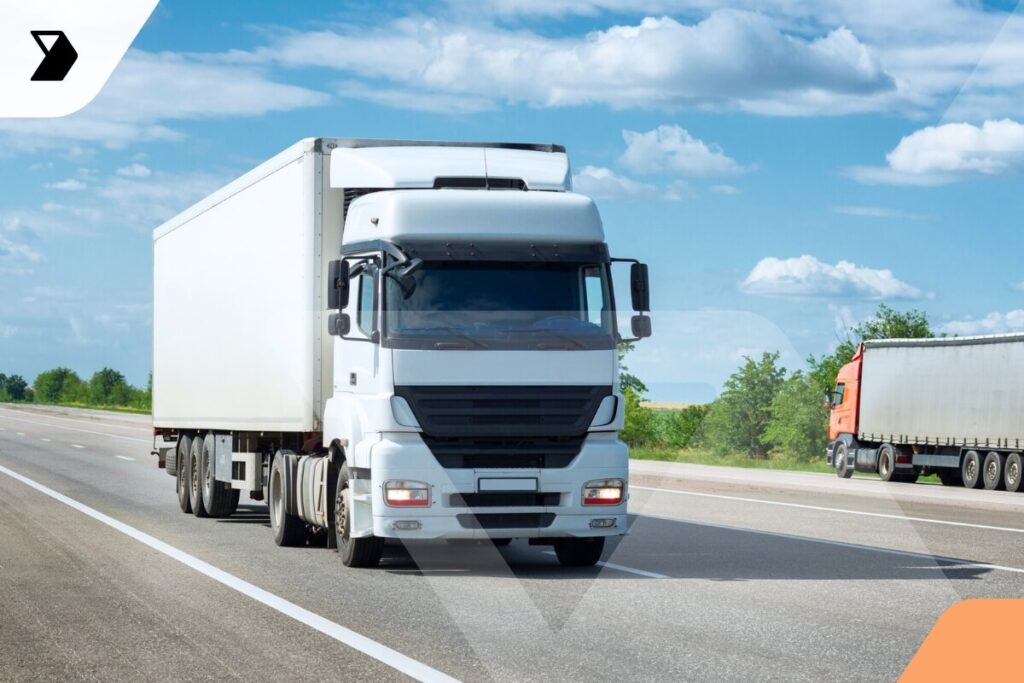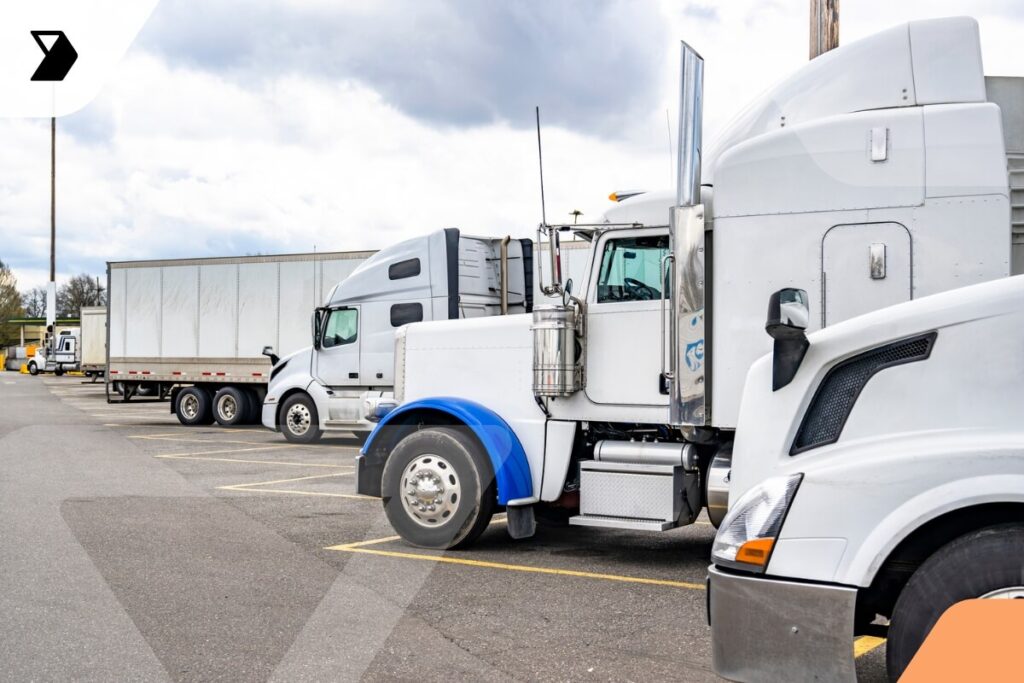Truck Dispatching Innovations: 6 Trends to Know About in 2022
They say necessity is the mother of invention. And today, we'll take a look at some innovations coming to the truck dispatching industry in 2022.
Ready to transform your supply chain?

Much of what we’ll look at is in direct response to the challenges the supply chain faced in 2020 and 2021. Indeed, every industry seems like it’s been met with disruption and logistics issues.
But innovative folks around the world are meeting the challenge and looking for ways to solve the problems that dispatchers and other logistics personnel face daily. Here are a few of those innovations that we’ll look into today.
- Supply chain visibility tools
- Control towers
- The adoption of digitization
- Autonomous trucks
- Third-party dispatcher training
- The network effect and social media
They say to never let a crisis go to waste. So let’s make the most of this moment and explore some truck dispatching innovations!
Supply Chain Visibility Tools
As the supply chain crisis of 2021 continued, a few terms seemed to rise in prominence. “Supply chain visibility” was certainly one of those terms. Why is that? Well, in short, when so many shipments are delayed, it starts affecting the bottom line. Eventually, decision makers get involved and want to figure out where their freight is.
In 2022, expect supply chain strategy conversations to continue to include visibility as a priority. Software companies saw the opportunity for improvement long before COVID-19 hit. But the backlog of post-pandemic shipments caused a strain on the supply chain. This caused many companies to adopt innovative supply chain visibility technology.
What does it do? Dispatch software that has predictive analytics powered by AI (artificial intelligence) can enhance on-time deliveries and identify delays or disruptions before they occur. Essentially, we’re talking about automated, real-time tracking that allows for route optimization and rerouting.
Another visibility-minded innovation you’ll hear more of in 2022 is control towers.
Control Towers
As the name suggests, control towers are akin to the air traffic control towers at airports. In other words, control towers help manage the flow of inbound and outbound traffic. A logistics control tower doesn’t sit high in the sky, but it does act as a central hub of information for truck dispatchers and decision makers alike.
The control tower concept isn’t exactly new. But again, the disruptions in the supply chain have brought it back to the forefront of many conversations. Advanced analytics powered by artificial intelligence are at the heart of the next generation of control towers.
This technology accumulates data points to provide an overview of operations. Control towers constantly analyze on-the-spot variations in supply and demand. As a result, any changes to stock and volume lead to adjustments in production and logistics requirements. The goal is to avoid disruptions.
In my opinion, this will translate to more milk runs—in other words, more trips that are routine and uneventful. Dispatchers may find that with control towers running things, they have more reliable loads and lanes. I can see how this type of visibility can help the customer, dispatchers, and drivers in terms of risk mitigation and efficiency.
Continued Adoption of Digitized Documents
Now that we’ve discussed the importance of veteran knowledge and leadership, let’s discuss digitization. Industry veterans might be comfortable and knowledgeable about many things. But if there’s a blind spot for any elder, it’s cutting-edge technology. Advancements in tech have a way of running into the “if it ain’t broke, don’t fix it” mentality. It’s sometimes fine to “leave well enough alone,” but not always.
For me, when we tell the story of innovative dispatching technology it starts with digitized documents. A company like Vector provides the cloud-based technology that forms the new backbone of the entire logistics industry.
And it makes sense. Digital tools that provide supply chain visibility run on data. That data is still collected at the same inflection points as it always has been. But the future is paperless, digitized load documents.
Human Drivers Are Sticking Around, For Now
The next two sections will remain important for a bit longer. I don’t anticipate 2022 to be the year that robots replace humans wholesale behind the wheel. Autonomous trucking is still a few years off. But a self-driving future continues to make progress toward becoming a reality.
Companies that are leading the charge toward autonomous trucking are forming strategies surrounding key lanes. For example, a recent report on Freightwaves.com indicates that only “68 roughly 500-mile-long segments on 25 interstates correspond to 88% of the freight that moves daily.” That implies a Pareto distribution of freight movement density that will likely be targeted first by autonomous trucks.
Further optimization of freight planning, routing, and dispatching will follow suit to meet this coming innovation. That said, the same report reiterates that full autonomy is still a ways off. And we know in general from Pareto models that the final 20% of freight lanes are likely to require 80% of the effort! I believe that means human drivers will be part of the equation in some capacity well beyond 2022.
Third-Party Truck Dispatching and Training Companies
There are plenty of innovations focused on the human development side of freight, as well. It doesn’t matter how long you’ve been in the trucking business: If you decide to start your own trucking company, it’s a whole new world. One hurdle new trucking companies face is dispatching.
Sure, they say the best teacher is experience. As you know, trucking provides a wealth of experience. In terms of experience, you might say trucking comes with the good, the bad, and the ugly. In my opinion, that’s just the nature of the trucking industry. Truckers are out there. The industry is very immediate and in the moment. Things happen.
But that doesn’t mean you can’t learn from the mistakes of others. There’s no reason to take all the lumps the hard way. That’s why a niche, or cottage, industry has developed around truck dispatching training. A company like Solid Rock Solutions Group offers 24/7 support to new trucking companies. In addition, they offer training programs.
At the end of the day, the idea is to learn from experts in real time. This transition benefits a new trucking company. First of all, it allows you to get up and running and begin to earn cash flow. Eventually, you’ll take the baton and manage your own dispatching. Ultimately, the goal is to handle your own dispatch. But with any good business training relationship, there’s the soft benefit of continued mentorship.
Unforeseen events occur. But the show must go on—and drivers need support. The future health of the trucking industry will rely on the support and know-how of industry veterans. Third-party dispatching and training companies formalize and optimize that mentorship process into a service.
Dispatching, Meet Social Media
Obviously, social media has taken over the planet. It comes as no surprise that the trucking industry would have entrants into the social media fray as well.
In reality, a show like Ice Road Truckers proved the trucking industry is a popular draw in traditional media. Indeed, the perils and triumphs on the Ice Road make compelling television. But trucking- and dispatching-themed social media accounts continue to pop up and bring a certain charm to the industry.
I enjoyed a few YouTube episodes of the Asian Mai Show. Like any solid social media channel, the goal of the show is to simply interview interesting and successful people—in this case, in the trucking industry. In addition, episodes center on CDL prep, trucking benefits, trucking tips, and advice.
Watching and driving is dangerous. Hence, podcasts! If you want an insider’s perspective on the tech revolution underway in the logistics industry, check out Vector’s Down to Freight podcast.
One more compelling YouTube channel that focuses on dispatching is Good Energy Worldwide. Host Alix Burton indeed brings good energy. He also walks his 32,000 followers through the ins and outs of dispatching.
In reality, social media influencers are following another trend: working from home. More of us are working from home these days. Entrepreneurs entering the dispatching business are following suit. Larger enterprises are also allowing team members to work from home, thanks to some of the digital innovations we’ve already mentioned.
My take-away is this: Yes, dispatchers, drivers, and business owners need support from industry veterans. Social media provides content that I describe as self-help support. You can learn almost anything on YouTube, right? That includes dispatching.
Beyond that, social media helps put the entire trucking industry on the radar of folks who might never otherwise consider a career in logistics.
See Change, Make a Sea Change
Steve Jobs once said, “Innovation is the ability to see change as an opportunity, not a threat.”
A sea change is a term that defines a profound transformation.
The trucking industry is in a moment of sea change. It seems to me that those who adopt the latest technological tools and maintain a creative mindset will drive innovation and continuous improvement within their companies.
This post was written by Brian Deines. Brian believes that every day is a referendum on a brand’s relevance, and he’s excited to bring that kind of thinking to the world of modern manufacturing and logistics. He deploys a full-stack of business development, sales, and marketing tools built through years of work in the logistics, packaging, and tier-1 part supply industries serving a customer base comprised of Fortune 1000 OEMs.
1 Comments
Leave a Comment
Continue reading
Ready to transform your supply chain?
Increase efficiency and productivity. Say goodbye to delays, handwriting errors, and time-intensive manual data entry.




Great insights! At Aerolink Carrier LLC, we’re seeing how supply chain visibility tools and control towers are transforming the way we track and respond to freight in real-time. It’s exciting to see how these innovations are not only improving efficiency but also making day-to-day operations smoother for both dispatchers and drivers.